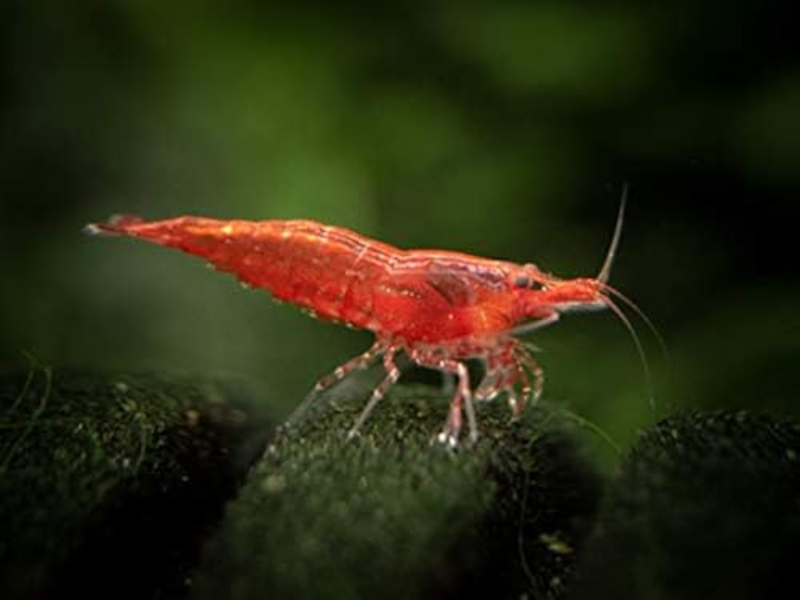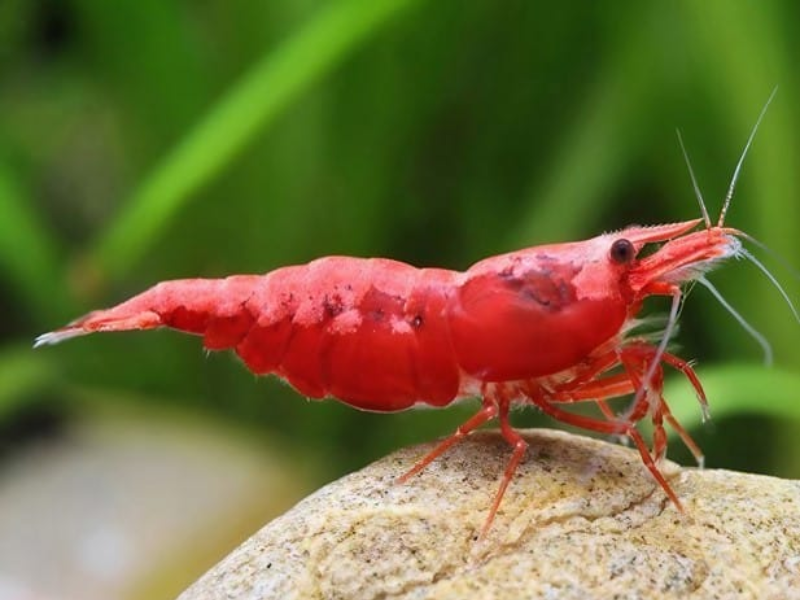Neocaridina davidi
Cherry Shrimp

Scientific Classification
Quick Stats
Aquarium Building Information
About This Species
Basic Description
Detailed Description
Native to the freshwater streams and ponds of Asia, Neocaridina davidi is a small decapod crustacean that has become a cornerstone of the aquarium hobby. Its natural habitats are characterized by slow-moving water, dense vegetation, and an abundance of organic detritus, which are key factors to replicate for their optimal health in a home aquarium. In captivity, they exhibit a constant, moderate activity level, primarily occupying the bottom and middle strata of the water column. Here, they engage in their primary activity: grazing. As tireless omnivores, their diet consists of biofilm, algae, and detritus. This scavenging behavior makes them an invaluable part of an aquarium's 'clean-up crew,' as they help manage waste and prevent algae overgrowth. While they will readily accept prepared foods like sinking pellets, wafers, and blanched vegetables, a mature tank with ample natural food sources is essential for them to thrive.
These crustaceans are distinctly social and should be kept in shoals. A group setting not only provides them with security but also allows for the observation of their interesting social dynamics. Despite their hardiness, they are sensitive to sudden changes in water parameters. Stability is more important than achieving a specific number, though they prefer a neutral to slightly alkaline pH and soft to moderately hard water. Their metabolism is slow, and they have very low oxygen requirements, resulting in a minimal impact on the aquarium's bioload. This low waste production allows them to be kept in higher densities than many other aquatic animals and makes them perfect for well-planted tanks where they will not harm the flora. Their peaceful temperament means they can be housed with other small, gentle species that will not view them as a food source. Proper care, a stable environment, and a suitable diet will ensure these engaging invertebrates live a full, healthy life.
Scientific Description
Neocaridina davidi is a freshwater crustacean belonging to the family Atyidae, an order of decapod crustaceans known for their specialized chelae (claws) adapted for scraping and collecting food particles. Morphologically, this species is small, with adults reaching a modest maximum size. It exhibits a compressiform body shape, meaning it is laterally compressed. As a member of the phylum Arthropoda, it possesses a chitinous exoskeleton, which it must periodically shed through ecdysis (molting) to grow.
Physiologically, N. davidi is well-adapted to stable freshwater environments. It has a notable tolerance for a broad range of pH levels, from slightly acidic to alkaline, and a wide spectrum of water hardness. However, it is a stenohaline organism, with a physiological limit to salinity that confines it to freshwater habitats. The species is characterized by a low metabolic rate and exceptionally low oxygen consumption, which contributes to its low bioload in closed aquatic systems. These traits allow it to prosper in environments with low water flow, typical of its native Asian ponds and slow-moving streams.
Ecologically, N. davidi functions as a benthic and epibenthic omnivore, playing a crucial role as a detritivore and primary consumer. Its diet primarily consists of biofilm, aufwuchs, phytoplankton, and decaying organic matter (detritus). This feeding behavior is vital for nutrient cycling within its ecosystem. It is a shoaling species, relying on group living for security and reproductive success. According to the IUCN Red List of Threatened Species, Neocaridina davidi is classified as 'Least Concern' (LC), indicating that it has a widespread distribution and is not facing significant threats in its natural range, ensuring a stable wild population.
Breeding Description
The reproduction of Neocaridina davidi in an aquarium setting is considered a straightforward process, making it an excellent subject for hobbyists new to breeding invertebrates. They are prolific breeders and will often reproduce without any special intervention, provided they are in a stable, mature aquarium with favorable water conditions and a balanced diet.
To facilitate breeding, it is recommended to start with a healthy, mixed-sex group. Sexual dimorphism is apparent in mature individuals. Females are generally larger and have a more robust, rounded abdomen compared to males. A key identifier for females is the 'saddle,' a greenish or yellowish area visible behind the head, which consists of undeveloped eggs in the ovaries. Males are typically smaller, more slender, and often less intensely colored.
The reproductive cycle begins after a female molts, at which point she releases pheromones into the water to signal her readiness to mate. A male will then deposit sperm, and the female will pass her eggs from the saddle, through the sperm, and attach them to her swimmerets (pleopods) on her underside. At this stage, the female is referred to as being 'berried.' She will carry the clutch of eggs for several weeks, constantly fanning them with her swimmerets to provide oxygen and keep them clean. It is crucial during this period not to cause the female stress, which could lead her to drop the eggs.
Once the gestation period is complete, the eggs hatch into miniature, fully-formed versions of the adults; there is no larval stage. These fry are immediately independent and will begin grazing on biofilm and microorganisms. For a high survival rate, a heavily planted tank with fine-leaved plants like mosses is highly recommended, as it provides ample surface area for grazing and numerous hiding places from potential predators. Filtration should be shrimp-safe, ideally a sponge filter, or have a pre-filter sponge covering the intake to prevent the tiny fry from being sucked in. While the fry can subsist on the natural food in a mature tank, their growth and survival can be boosted by supplementing with powdered fry food or finely crushed flake food.
Sexual Dimorphism
Related Images

Yellow Golden Back
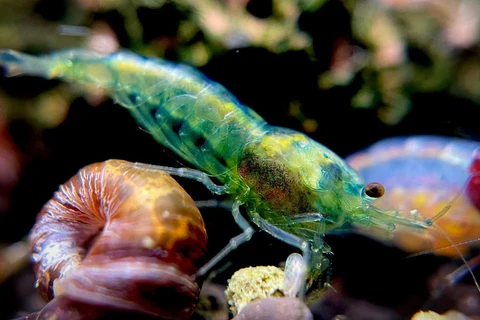
Green Jade
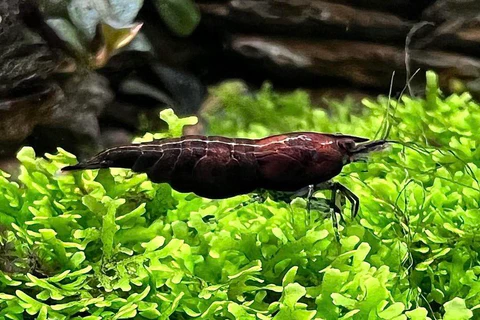
Black Rose
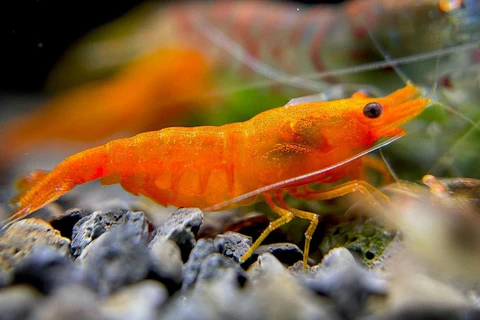
Orange Sakura
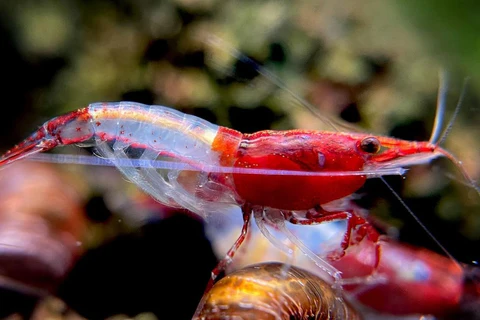
Rili

Blue Dream
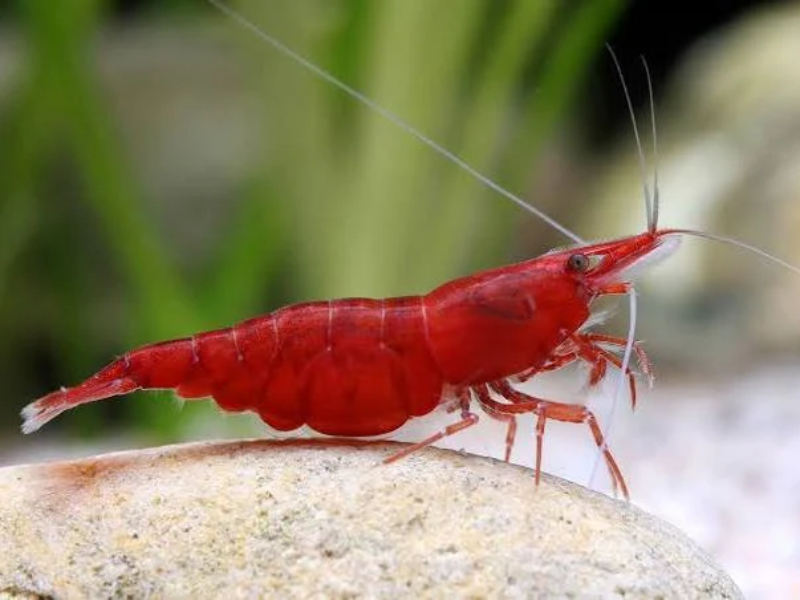
Red Cherry
Generate Printable Card
Create a printable card for this creature to display in your store or aquarium. The card includes a QR code for quick access to more information.
